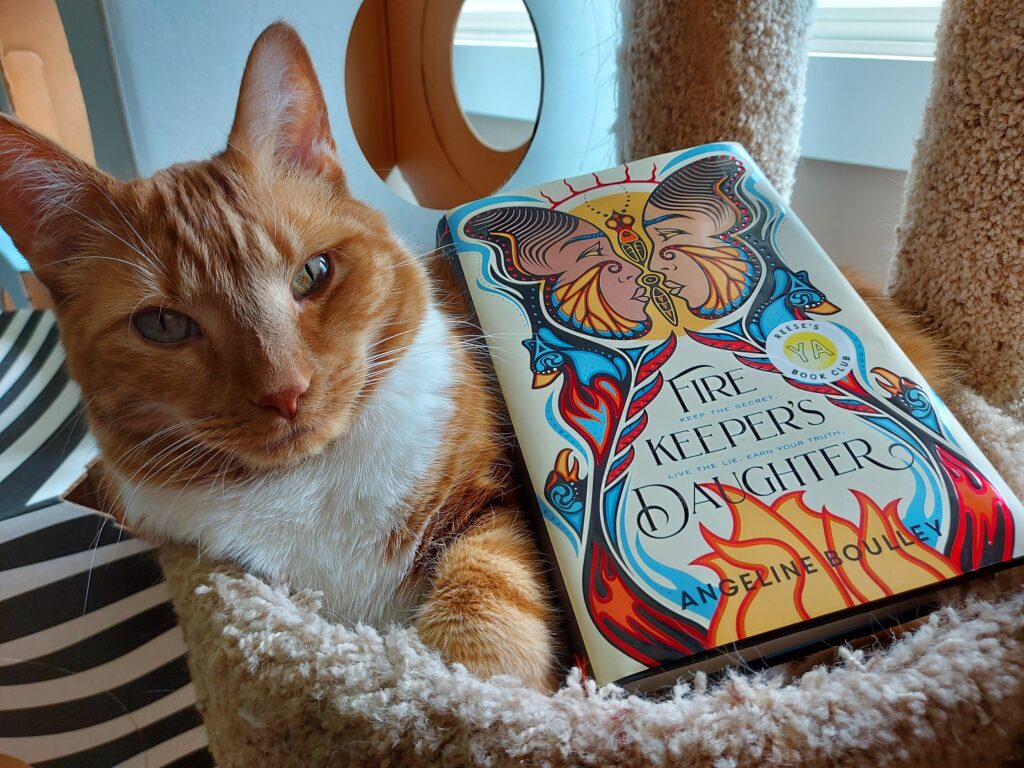Firekeeper’s Daughter by Angeline Boulley

Firekeeper’s Daughter is an impressive debut from Angeline Boulley that I highly recommend. It is classified as YA, but aside from the 18-year-old protagonist, it reads like an adult novel. There is no magic, no supernatural creatures, no “chosen one” trope and certainly no love triangles. Firekeeper’s Daughter is very much grounded in the real world and in real-life situations and is a mystery/crime thriller rather than a fantasy novel.
Firekeeper’s Daughter is about Daunis Fontaine, who is half white and half Ojibwe. Her mother is white and from a prominent family in town and gave birth to her when she was 16 years old. Her father was raised on the nearby Ojibwe reservation and was a popular hockey player who played on the local team before a car accident ended his hockey career. He later died in a work accident when Daunis was a child. Her parents were never married because (a) her mother’s parents are racist and were angry that a Native American got their daughter pregnant and (b) her father did not know her mother was pregnant and ended marrying another woman before he could find out.
Daunis grows up straddling the white world and the Native American world. She has a privileged upbringing, and a trust fund, because of her white grandparents, but she does not feel like she really fits in with the white world because of her Ojibwe ancestry. She is close to her father’s family because her mother insisted, against her grandparents’ objections, that she have a relationship with them, and so she considers herself as part of the Ojibwe community, even if she cannot be a full trial member (because her father is not named on her birth certificate). But she does not feel like she fully fits into the Ojibwe community either because certain members of the community look down on her because of the lightness of her skin (she is on the outer edge of the Acceptable Anishinaabe Skin Tone Continuum).
The plot of the Firekeeper’s Daughter revolves around Daunis witnessing someone close to her being murdered, and then becoming a confidential informant for the FBI, who are investigating a meth production and distribution ring that appears to originate from the Ojibwe reservation, and the meth has a certain additive in it that makes it especially potent and dangerous to whoever uses it. The author wrote the Firekeeper’s Daughter because she wanted Native teens to have a hero that looks like them and whose greatest strengths lie in her Native culture and community. Daunis is a strong, intelligent and capable woman who is uniquely suited to finding out the source of the meth because of her passion for both chemistry and Ojibwe traditional medicine.
I very much appreciated the opportunity to learn about Ojibwe traditions and culture from the Firekeeper’s Daughter. But the novel also explores many dark themes that are unfortunately associated with Native Americans, such as racism, residential schools, alcoholism and drug use, and sexual violence towards women (there is one harrowing scene involving Daunis and a hotel room that I am so glad the author did not write in great detail). Although signs point to Native Americans being the perpetrators of the meth ring, because our protagonist identifies as Ojibwe, the story focuses on how Native Americans are the victims of systemic racism and how they use their traditions to work towards healing a community that has been rocked by death and criminality.
Even if YA is not your jam, I strongly believe that you should give the Firekeeper’s Daughter a chance. Not only did I appreciate the mystery part of the novel (I did not find it too easy to identify the parties involved in the meth ring), but I believe it is important to read books that give us the opportunity to learn from, and appreciate, another person’s perspective, beliefs, and culture.